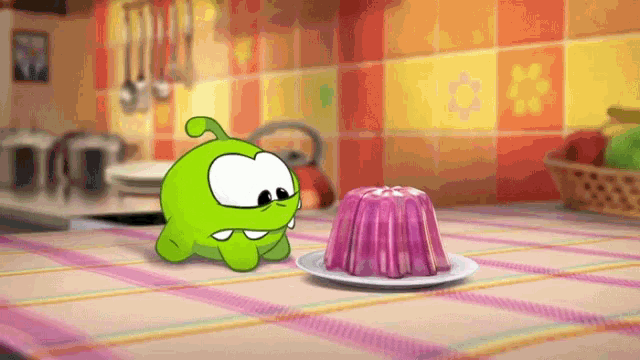Jello, World!
Team Members: Noah Adhikari, Jedi Tsang, Johnny Lu, Allen Gu

Summary
We hope to replicate jello through softbody simulation and track its interaction with light during collisions and deformations. If time permits, we would also like to include more interesting rigid-body collisions such as blades or bullets.
Problem Description
In this project, we strive to create an accurate and realistic simulation of jello, a task that comes with many challenges in rendering and physical simulation.
Why it’s important: Simulating jello-like substances extends to many different materials that combine both non-rigid and rigid bodies. With our approach, we would expand the capabilities of our simulation and possibly be able to model many other materials as well.
Challenges:
- Rendering a translucent object to look like jello
- Implementing a technique to simulate jello
- Handling interactions and collisions with other rigid objects (or even fluids)
- To fully simulate jello, we’d want to be capable of modeling how it breaks apart under high stress
Ideas: For rendering, we might extend our ray tracer from Project 3 or look into more optimized renderers. For simulation, we are looking into material point methods (MPMs) and how to simulate multi-phase materials. Another approach might be to extend our mass-spring mesh models, though this wouldn’t be able to simulate jello breaking.
Goals and Deliverables
Main Deliverable: Our goal is to develop a jello simulation to produce videos of jello-like substances interacting with each other and rigid objects. The substances should realistically bounce and deform, and we also intend to support translucent jello so the shading and refraction of light through the jello should be realistic as well. We will test with different degrees of damping which will affect how rigid or stiff the jello is.
This should be achievable since it will involve many concepts we’ve learning in class like spring systems, external forces and motion simulation, as well as light refraction and other ray tracing concepts.
Intended goals:
- (baseline) Opaque jello dropped onto rigid floor
- (expected) Translucency
- (expected) Interactions with other bodies (soft and/or rigid)
- (stretch) Simulating more interesting interactions (e.g. knives, needles, or bullets)
- (stretch) Optimizing simulation for faster rendering
A minimum for success is the baseline goal of a simulation of an opaque softbody jello-like object dropped onto a rigid floor, with realistic bouncing and deformation. Goals 2 and 3 are what we plan to achieve, making the simulation more realistic by including translucent jello and collisions with non-floor objects. If we are running ahead of schedule, our stretch goals are to simulate more interesting physical interactions and improve the performance of our simulations.
Quantifiable metrics are difficult to define for this project, but we have at least one: seconds per frame for a given render. Quality will mostly be judged by the realism of the simulation.
Schedule
Week one:
- Basic rendering code with no physics
- Opaque raytracing
Week two:
- Develop jello model
- Add physics simulation i.e. gravity
- Collison detection
- Milestone deliverables
Week three:
- Deformations
- Refraction
Week four:
- Stretch goals